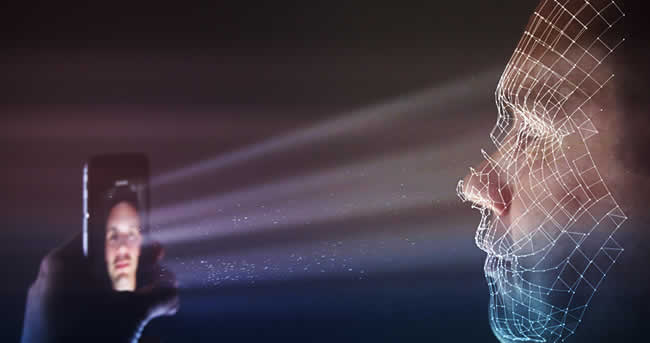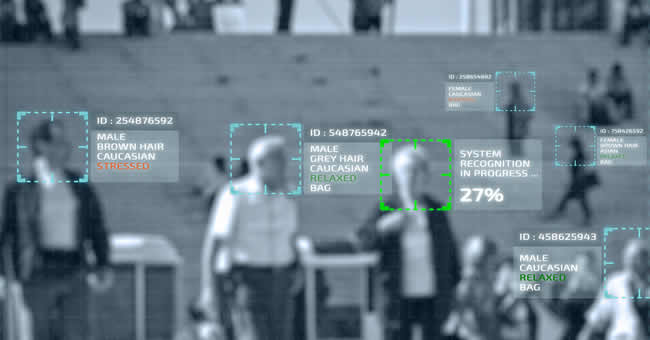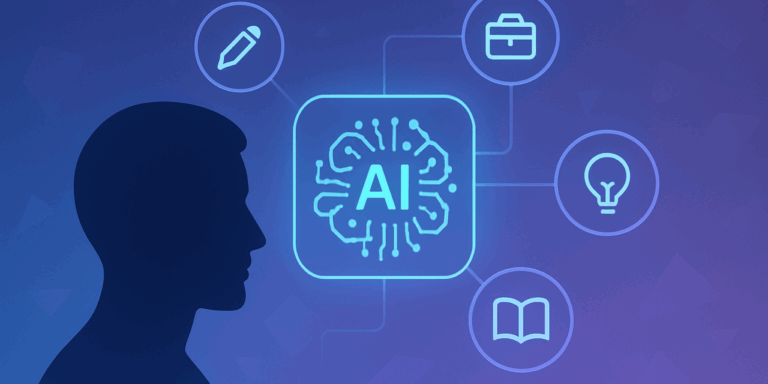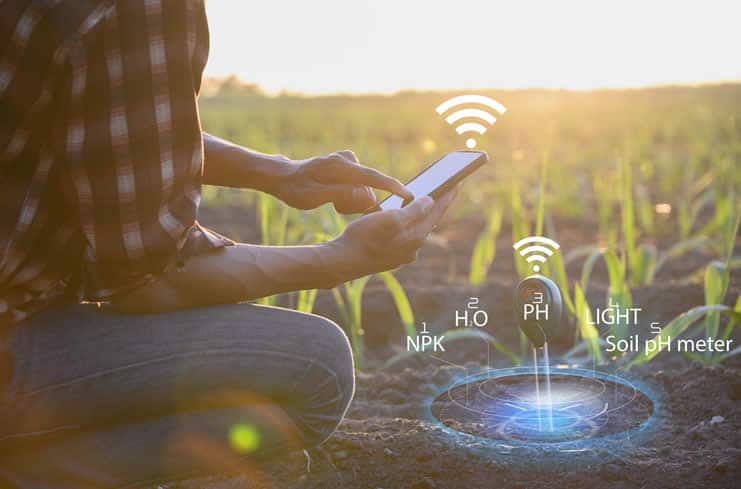Facial recognition becomes an ever-larger part of the biometrics market and digital transformation efforts across the globe. Various segments of the – quite diverse – facial recognition market are poised to grow faster than previously expected.
3D facial recognition software overcomes the drawbacks of 2D facial recognition and can work in low light or completely dark areas
As investments in face recognition technologies increase and technologies mature, we see facial recognition usage increasing in some use cases, including new ones. The COVID pandemic has proven to be an essential driver here.
The COVID-19 pandemic also leads to facial recognition systems, combined with other biometric techniques. As it’s expected digitization and digitalization will accelerate in several areas because of the pandemic, some inevitably will see increasing usage of face recognition technologies.
For the technology industry, the growing facial recognition market overall is a financial blessing, pure and simple. The focus is often on the artificial intelligence, machine learning (mainly deep learning), and machine vision technologies that enable the matching of images from cameras with images in databases and complex facial recognition systems, which are enhanced by far more technologies.

There is the hardware, the infrastructure to capture and interpret the data with facial recognition analysis tied to edge computing, the connectivity aspect, the software, the services, the list goes on.
Facial recognition in times multiple technologies and areas of application converge
Facial recognition is indeed an area of biometrics where several technologies meet. The next generation of mobile networks, 5G, and edge technologies, are a few more that will make it more widespread than it already is.
In fact, the deployment of high-density networks of AI-supported security cameras to monitor anything is most probably the first significant area where 5G cellular Internet of Things (where 5G and IoT meet) can have a considerable impact: homeland security. Or, more specifically: the usage of high-density networks of AI-supported security cameras. This isn’t just the case in homeland security but also in securing critical facilities or even smart cities and other communities.
In an interview on building systems integration in which facial recognition in facilities, from smart offices to airports and data centers, was mentioned several times, we looked at how face recognition, IoT, 5G, and edge change the landscape. Building management systems expert, Martin Feder said that building systems are going to move more into an AV communication world where camera technology is linked to face recognition. He also expects CCTV and recognition to play a role in the security of edge or micro data centers that pop up underneath 5G towers. In other words: ever more use cases and growth ahead.
The majority of smartphone facial recognition will be software-based, with over 1.3 billion devices having that capability by 2024
If you start looking on an application and use case level, it even goes much further since facial recognition is growing fast in specific areas that aren’t about government, defense, and security surveillance. You could distinguish between the usage of facial recognition in consumer applications (typically tied to smartphones) and face recognition technologies in business environments and security.
The facial recognition technology market gets driven by the COVID-19 pandemic
With the COVID-19 pandemic, facial recognition technologies also increasingly get used in digital healthcare and disease outbreak prevention by combining it with other types of biometrics and in applications, ranging from identifying people with protective headgear to applications including, for instance, temperature detection.
The needs caused by the pandemic are changing the dynamics in the face recognition technologies market as tackled in research we covered in an article on the biometrics market. According to the ABI Research report release, the value proposition of algorithm developers now includes face and iris technologies enabling the identification and authentication (and, indeed, surveillance) of people who have partially or fully covered their faces, including citizens that wear face masks or protective headgear.
Moreover, technologies that enable temperature and fever detection, as used in many countries, have been retrofitted in access and border control, ABI Research analyst Dimitrios Pavlakis states. Finally, biometric telemedicine applications are used for remote healthcare and telehealth, both no doubt being accelerated in future digital health approaches. As the overall biometrics market takes a hit (especially contact-only biometric techniques), the technologies are undergoing a forced evolution rather than an organic one per ABI Research. And AI biometric firms are spearheading the charge per the research company, with growing investments in AI face recognition applications whereby Chinese companies invest most.
Note: it’s important to also distinguish between the usage of facial recognition for surveillance (with debates on the dangers of mass surveillance, bias, personal data protection, and cybersecurity breach risks) and facial recognition for authentication (typically for applications people want to use and usually somewhat less subject of debate).
Facial recognition in consumer applications
Many immediately think about things like airports and border checks, surveillance and similar applications when hearing about facial recognition, but facial recognition applications are also tested in retail facilities (not just for security, even for self-service checkout and far more).
Face recognition technologies are also used by social networks, for digital marketing purposes, in healthcare (patient screening), in voting (gov), for access to specific facilities, for criminal investigations, and some say it’s vital for the future of mobile banking and mobile commerce (secure mobile payments and authentication).
According to Juniper Research, for instance, facial recognition hardware, such as Face ID on recent iPhones, will be the fastest-growing form of smartphone biometric hardware (from an estimated 96 million smartphones in 2019 to over 800 million in 2024).
The advent of new technologies, such as high-definition Closed Circuit Television (CCTV) and high-resolution 3D facial recognition technologies, along with iris recognition and emotion detection, has enhanced the facial recognition market
While facial recognition hardware will grow over 50 percent each year during the forecast period, these software solutions will be on 1.3 billion smartphones per Juniper Research, enabled by advances in artificial intelligence, with companies like iProov and Mastercard offering facial recognition authentication that is strong enough for payment and other high-end authentication tasks.
Obviously, you can imagine other scenarios where authentication is needed for payments or other services (e.g., access) in consumer-oriented applications. In an article on technologies in the hotel industry we, for instance, mentioned how one of the panelists saw facial recognition as an opportunity for payments and room access, taking into account data privacy issues. Facial recognition is already used for building access on other areas than the hotel industry too of course.
Facial recognition software and services
Another market that’s growing is that of facial recognition software tools and solutions. However, it’s clear that growth won’t be the same everywhere in the world and the vendors will differ too. Even with COVID-19 driving the market, facial recognition is perceived quite differently across the globe.

As you know, facial recognition, homeland security, and the usage of facial recognition systems for the identification and verification of ‘criminals,’ forensic video investigations, cross-border monitoring, and law enforcement are the subject of fierce debates.
The media attention for the Clearview AI story, where we have an apparently huge AI image database that was built in very dubious ways (by scraping social media sites, public websites and so forth) and is used on a quite large scale by law enforcement and agencies in the US is just one recent example. Moreover, the company seemed to have private companies among its clients and agencies in other countries than the US and Canada (in the mean time, and also under pressure of lawsuits, Clearview AI said it would not work with private companies anymore).
Mass surveillance concerns regarding the usage of face recognition in some parts of the world are food for other debates. And then there are all the issues regarding bias and abuse regarding facial recognition algorithms.
Facial recognition becomes more accurate
Despite calls in the EU to ban facial recognition applications for some time (there are facial recognition systems in place that adhere to the GDPR’s personal data protection rules) and the actual banning of it in some other regions, facial recognition isn’t going away. It continues to be developed, becoming more and more accurate.
More powerful special micro-controllers and processors, better images with better cameras and on-chip processing and edge computing for more intelligence in and close to the cameras, 3D facial recognition, and more accurate face recognition algorithms thanks to neural network algorithms are just some of the evolutions from the past few years.
According to a NIST report, the accuracy of facial recognition technologies dramatically improved between 2013 and 2018. The report, for which several datasets of two-dimensional images were used, states that ‘the accuracy gains stem from the integration, or complete replacement, of prior approaches with those based on deep convolutional neural networks.’ As such, NIST says, face recognition has undergone an industrial revolution, with algorithms increasingly tolerant of poor quality images, even if there are still significant differences between various algorithms.
The main reasons why facial recognition isn’t going to go anywhere:
- demand is high (and not just from governments and law enforcement, as said there are applications in marketing, retail, the protection of critical facilities, etc.) and the COVID-19 pandemic increased demand,
- all countries and supranational organizations use it and will increasingly do so although the ways in which and reasons for what differ, as do debates with different cultures and attitudes,
- although there are more accurate biometric measurements it’s far easier to use – at scale – and offers far more opportunities for those using it, while avoiding contact biometrics and thus hygiene concerns,
Increasing need of facial recognition-enabled biometrics solutions for identity management, border management, and homeland and military security management have fueled government organizations to largely implement facial recognition technologies
Concerning the latter: the usage of fingerprints for instance, another topic that is debated in some countries in recent years, requires an action from the individual; facial recognition strictly speaking doesn’t, at least in public spaces and where no one tells you it’s used.
The debates on facial recognition applications aren’t new but the calls to ban them in mainly public circumstances for a while are louder than ever with the Clearview AI story making waves.
The question to consider, however, is not about facial recognition that could be used for the better here and there as well. It’s about all the technologies that enable surveillance at scale and how we’re building a digital surveillance environment that inevitably is and will continue to be misused by big tech companies and governments alike. It’s a human and social issue and we’ll see where it ends.
The market of facial recognition software systems and services
Time for a look at the facial recognition systems market and its drivers. Per a report ‘the rising need for surveillance has become one of the major factors to drive the facial recognition market’. Where that rising need comes from and is fueled most or is highest is up to your judgment.
According to the MarketsandMarkets report the facial recognition technology market will reach $7 Billion by 2024. For the period 2019 ($3.2 Billion) – 2024 that means a compound annual growth rate of 16.6 percent. To give an idea of the ‘importance’ of this market, at least according to the MarketsandMarkets data: worldwide spending on the Internet of Things is expected to surpass the $1 trillion mark in 2022.
The market seems small. But predicting its size and evolution seems like a very challenging task, given all the debates and uncertainties ahead. As said, the report only looks at facial recognition software tools and related services. Or in other words: the scope of the approach of the research obviously doesn’t show the full’ market value’ beyond solutions and services and as mentioned, there is a massive market for facial recognition infrastructure.

The software tools concern 2D facial recognition, 3D facial recognition and facial analytics. As you can imagine, 3D facial recognition technology is ‘better’ than 2D facial recognition for several ‘use cases’ where 2D doesn’t do too well. It is also the largest segment from a market size perspective with 3D facial recognition mainly being used in cross-border monitoring, document verification, and identity management.
The main companies in the areas the report covers are NEC (Japan), Aware (US), Gemalto (Netherlands, now part of Thales), Ayonix Face Technologies (Japan), Cognitec Systems GmbH (Germany), NVISO SA (Switzerland), Daon (US), StereoVision Imaging (US), Techno Brain (Kenya), Neurotechnology (Lithuania), Innovatrics (Slovakia), id3 Technologies (France), IDEMIA (France), Animetrics (US), and MEGVII (China).
The report doesn’t take into account the impact of the COVID-19 pandemic, so it’s ‘wait and see’ to get the full picture on how this will cause the market to accelerate.
The countries and segments where facial recognition software is most used
Given all the existing initiatives, it’s not a surprise that the Asia Pacific region will account for the highest growth during the forecast period, among others driven by government investments in security and surveillance infrastructure.
The main APAC activity is in China, Japan, Singapore, and, increasingly, India. Another factor contributing to the growth is increased public awareness, an important one to watch indeed. With COVID-19, especially China massively stepped up its already high and often debated usage of facial recognition. As mentioned earlier, Chinese companies are also the ones who invested most in AI face recognition applications per ABI Research with, among others, SenseTime, Megvii, Alibaba, and Baidu.
Integration of new facial recognition technologies with the existing legacy system is limiting the growth of facial recognition solutions in the market
In other regions, the US, Canada, and the UK have been investing quite a bit in facial recognition and continue to do so. The government and defense vertical has been the main contributor to the market and also continues to be one of the fastest-growing sectors.
Facial recognition solution adoption is also increasing in government-owned large-scale programs, such as smart cities and smart transportation per MarketsandMarkets. Yet, so far, ‘increasing need of facial recognition-enabled biometrics solutions for identity management, border control management, and homeland and military security management have fueled government organizations to largely implement facial recognition technologies’.
Other verticals where quite a bit is happening include Banking, Financial Services, and Insurance (BFSI), healthcare and retail, and education. We gave a few examples of applications in the scope of some of these segments.
We’ll update this article as soon as the extent of the impact of COVID-19 on the usage of facial recognition across countries and segments is fully understood.
Facial recognition in a nutshell – definition, future, concerns
We mentioned ABI Research analyst Dimitrios Pavlakis before. In the short video below, posted end 2019 by digital identity and security specialist Gemalto shares some views on the essence of facial recognition.
He defines facial recognition as a biometric technology that attempts to identify individuals based on facial characteristics. Dimitrios also explains how the future of facial recognition is, among others, about the merging of the technology with applications in the space of IoT, such as automotive, the smart home, and, as mentioned, smart city environments.
Dimitrios also explains the differences between facial recognition for authentication and surveillance, and of course, tackles the many concerns. Check it out below.






